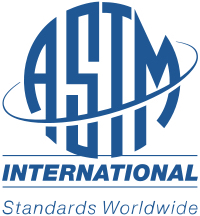One of the staples of environmental consulting continues to be the Phase I Environmental Site Assessment (ESA). Like other environmental standards, Acts, and regulations, the Phase I ESA has changed over the years. The first Phase I ESA standard was issued in 1993 (ASTM E1527-93).
There were revisions in 1994, 1997, 2000, 2005, and 2013. As of November 18, 2021, the new standard is ASTM E1527-21.
The E1527-21 standard establishes new requirements for complying with the “All Appropriate Inquiry” (AAI) rule in 40 CFR Part 312. Note that E1527-21 will not be a required part of the AAI rule until the US EPA adopts it through a formal rulemaking.

Changes to the ASTM standards were not very significant, but make sure you are aware of the changes before you conduct you next transaction (image source astm.org).
Summary of the Changes to Phase I ESA
Attorney, Larry Schnapf served as the co-chair of the legal sub-committee for the amendments to the new standards. Mr. Schnapf provides the following bulleted summary of changes (Note the bullets below are taken directly from his website).
- Key terminology revisions: The terms “Recognized Environmental Condition” (REC); “Controlled Recognized Environmental Condition” (CREC); and “Historical Recognized Environmental Condition (HREC) have been strengthened to reduce misclassifications of known or likely hazardous material and petroleum product releases affecting subject properties. The revisions are further supported by a new appendix that provides guidance on the REC/HERC/CERC (sic) decision process, a flow chart, and representative examples of each.
- New definitions: The terms “Property Use Limitation” (PUL); and “Significant data gap” have been formally defined to provide important clarification of existing concepts.
- The historical records review section has been restructured and updated to reflect good commercial and customary practice. The revisions clarify subject and adjoining property identification, use, and research objectives; and new parameters have been established for the use of standard historical sources.
- Detailed site reconnaissance requirements have been added to reinforce existing good commercial and customary practice.
- Revised report requirements have been added to strengthen the deliverable, including consistent use of the term “subject property”; identification of RECs, CRECs, and significant data gaps in the Conclusion section; photos of site reconnaissance items; and a site map.
- Updated appendices: Include an extensively revised legal appendix; new REC/HREC/CREC guidance; revised report outline; and updated discussion of business environmental risks including emerging contaminants.
For a more in depth look at the changes, see this recording by ERIS; “A revised ASTM Standard for Phase I ESAs is HERE”
PFAS and Phase I ESA
With respect to PFAS, per- and polyfluoroakyl substances, this will present an environmental challenge for several reasons: they are ubiquitous, there are no federal standards, many states have developed their own state-specific enforceable standards, and federal advisory limits and state enforceable limits (where applicable) are in the parts per trillion range.
Testing for PFAS, where applicable, should be done with care. Choose your technical and legal team with care.
Finally, if you want to learn more about PFAS, see our PFAS Resources Page.
Feel free to connect with me on LinkedIn. You can also reach me at 249-932-0228 Ext.133.
Sign up for our monthly newsletters.
Principled Foundation | Thoughtful Advice | Smart Solutions
